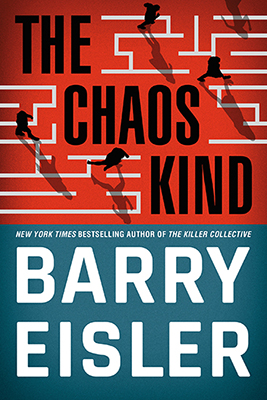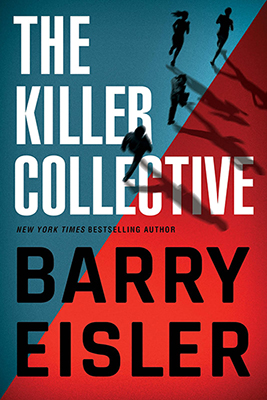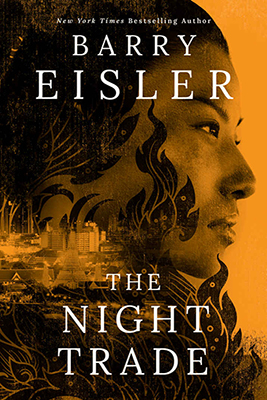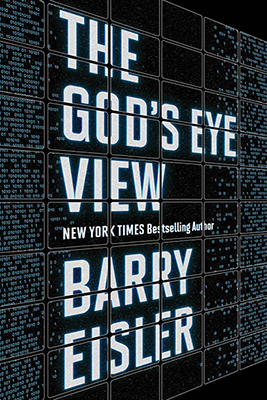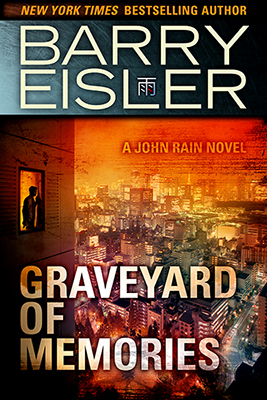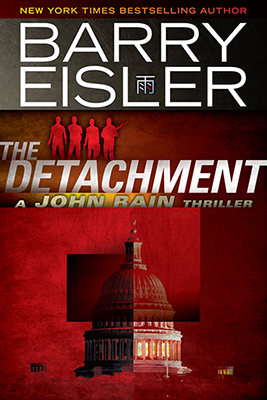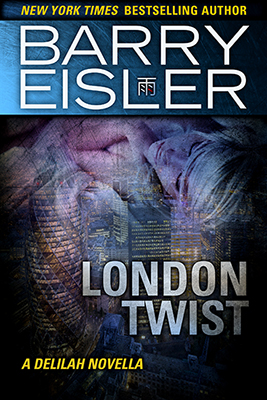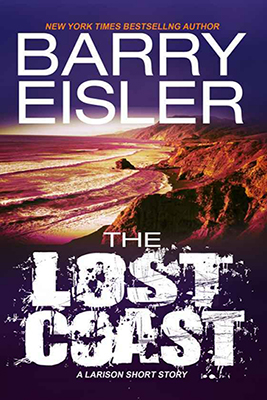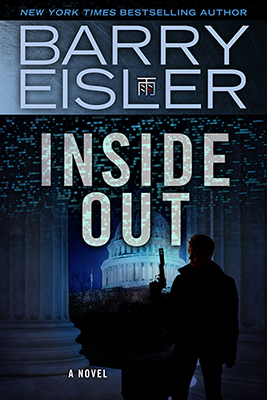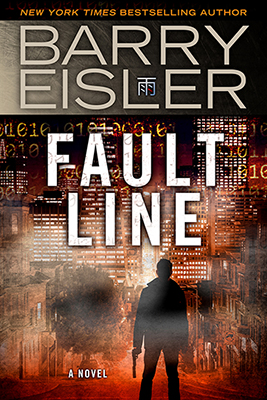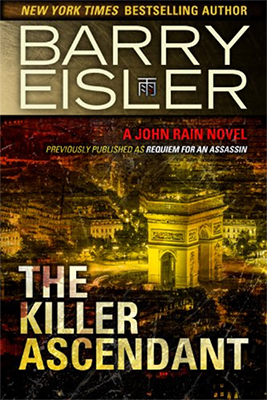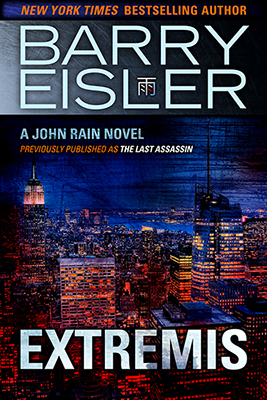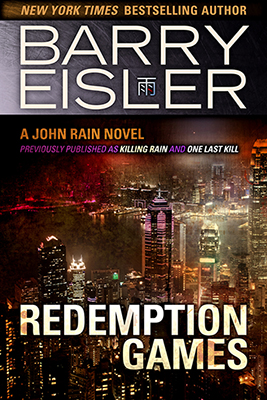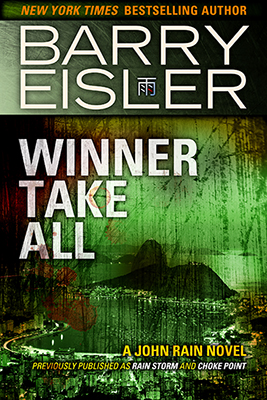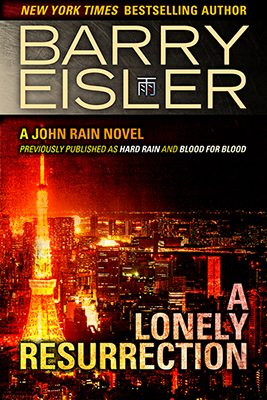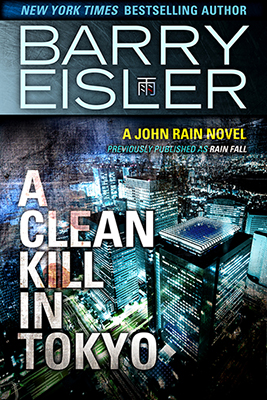Mistakes
I’m a fanatic about research, but even so from time to time the odd mistake slips past all my lines of defense and makes its way into a published book. For anyone who has ever been pulled out of my stories by one of these glitches, my apologies. Here’s a list of mistakes readers have brought to my attention over the years. If you find one of your own, shoot me an email and I’ll add it here. I don’t include typos, of which there are regrettably a few, because they’re self-explanatory. If you don’t see the following mistakes in the book you’re reading, it’s because I managed to fix most of them in subsequent editions. Still, I wanted to leave the original corrections here—they keep me honest and they’re interesting in their own right.
By the way, throughout the books, single malt Scotch is spelled “whiskey.” Purists will note that single malt Scotch is spelled whisky, but the venerable copyeditors of my earlier books seemed to dissent.
Thanks everyone for all your feedback. Note: If you want me to attribute a correction to you, please make that clear in your message. Otherwise, I’ll post corrections anonymously.
Oh, and watch out—there are some spoilers in here.
Click on a cover or scroll down to read more
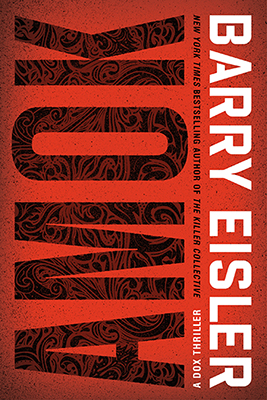
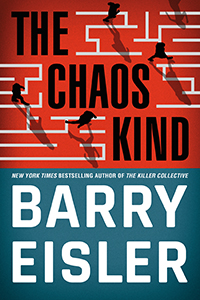
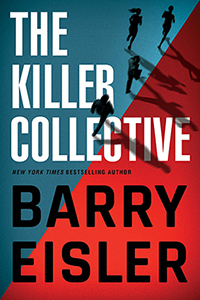
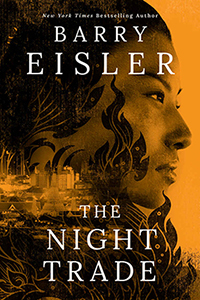

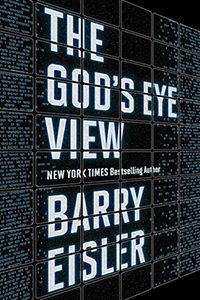
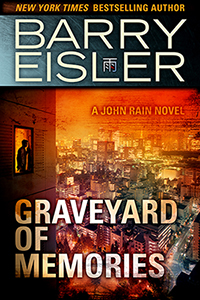
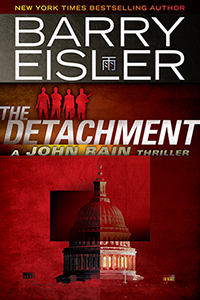
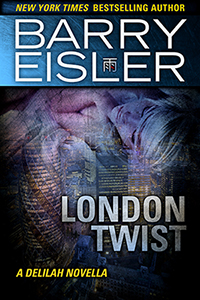
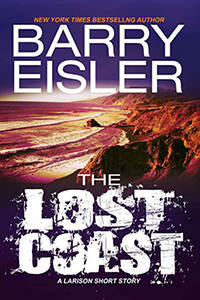
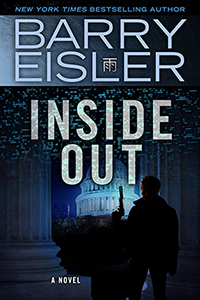
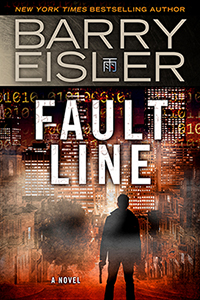
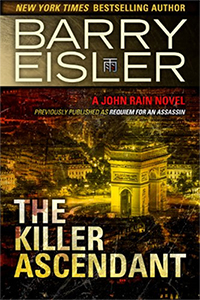
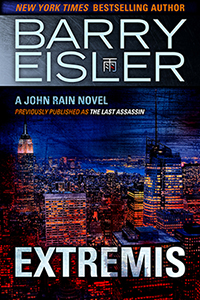
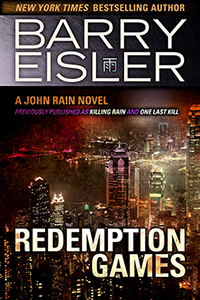
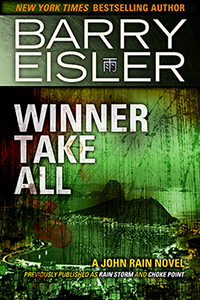
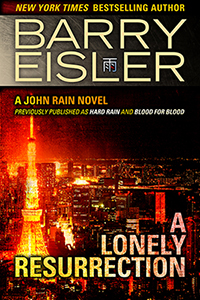
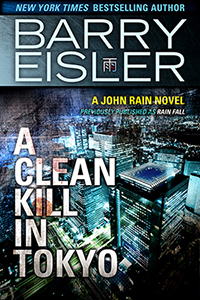
New York Times Book Review
FACTS, CHECKED: “This column has gone out of its way more than once to praise novelists who bother to identify, and when possible to correct, errors that creep into their books. So it was a treat to find out about Barry Eisler’s books—he’s a former C.I.A. employee who writes thrillers about a half-Japanese, half-American freelance assassin named John Rain—and also to discover his Web site. On it, you’ll find a detailed, witty “mistakes” page that makes you trust everything else he writes all the more. Eisler is willing to suffer for veritas. About one mistake he writes: “The stun gun Rain uses on Crawley in Chapter 9 of Winner Take All would have left marks (I know because I took a fan’s advice after the fact and … that’s right, zapped myself with a stun gun. Hurts like hell and leaves welts).” At other times, Eisler can sound almost dainty: “In Chapter 36 of Extremis, Delilah says ‘Enchantez,’ ” he writes. “This of course should be ‘Enchantee’ because the word is a feminine adjective, not a verb. Pardonnez-moi.” D’accord!” (June 2007)
AMOK
This was a bone-headed retcon several readers have now brought to my attention—hopefully justified by AMOK being a damn good origin story (if I may say so). I’m embarrassed to admit that when I set about writing Amok, I had forgotten all about the referenced Redemption Games exchange, which I’d written almost 20 years earlier.
Mr. Eisler,
I’ve been reading your books since what was then known as Rain Fall was first released, but this is my first time catching an error.
In Redemption Games/Killing Rain, when Rain is incredulous that Dox is reading Nietzsche’s Beyond Good and Evil, Dox explains that his father worked for a big pharmaceutical company and was posted to Germany, where Dox “grew up” and read “old Friedrich” in school. This doesn’t seem to fit with either Roy Williams or Henry Abbott as described in AMOK.
—Zack
The Chaos Kind
I confess that the following is far outside my competence; including it here for the experts among us!
Hi Barry,
I love your books and have read every one (including the singles). Your research, attention to detail, plot, and character development always make reading your books enjoyable and educational.
In the corrections to Chaos Kind, Mr. Bardmesser says that if you have 256 bits in a password that there are 2256 possibilities. I think this is a typo since it is missing a character and should read 2^256, which is an entirely different number. When considering a brute-force attack on such a password, another complication is that almost every system I know “rate limits” the password input and with a certain number of mistakes, either increases the time before a new key may be attempted or locks the person out altogether. As he says, it isn’t common to attempt to crack such a password.
On the subject of physical destruction, maybe they should take a page from someone I worked with who deployed with the Navy Seals (he was a technical specialist and not an operator). When they wanted to destroy a computer, they simply used a “little” C4. Kind of hard to put Humpty Dumpty back together after a little explosion.
While what Mr. Bardmesser wrote about key length is technically correct, namely that if you have 8 characters, this is 64-bits, the actual number of choices isn’t quite this many. Password characters must be printable and there are only 95 possible printable characters in the ASCII character set. Given an alphabet with 95 possibilities and 8 characters, there would be 95^8 possibilities. Still an enormous number. The time to brute-force crack a large password is not realistic. A brute-force attack that could input 100,000 passwords per second would require on average a little over 1,000 years to crack. The main problem is that most passwords aren’t random and if too complicated, are generally written down someplace so that becomes the weakness.
—Mark Ross
The points about Larry Ellison’s estate are interesting so I’m including them here, even though the estate in the book was of course fictional so any differences aren’t really mistakes as such.
OK, there’s no way I’m giving you any critiques (let alone such long-winded ones) before I reiterate that I truly am a big fan. Also, since the book has been out for a while, I fully realize these points won’t make any difference and that you clearly don’t need my help to write multiple best selling novels. Basically, I don’t want to be taken as just another nitpicky, annoying critic. I know how much you value technical accuracy and it’s only because I think you’d like to hear this that I’m offering these points. OK, enough fan-boy pandering… Here we go:
Larry Ellison’s estate in Woodside (because we both know that this is what we’re talking about here, right…). Last I heard, GDBA (Gavin De Becker and Associates) is still running Ellison’s estate security and EP (they’ve been doing it for quite a few years). Besides the fact that these guys are all ex-military and/or LEO, they work with concealed firearms (not exposed ones in holsters) and are paid quite a bit more than $15/hour. The lowest hourly take-home pay rates you’ll find for high-end estate security in the Bay Area is $35/hour . Most get paid around $40-45/hour or higher, along with very good benefits (401K, family medical, etc). On top of their backgrounds, these guys are also trained in tactical handgun, tactical medicine and many of them in much more (executive protection, security driving, tactical rifle, surveillance detection). They would also have emergency panic buttons (often carried on their person) that can be silently pressed to alert emergency PD response. Just to clarify (and I really hope I’m not coming off as show-offy), these aren’t guesses. I’ve worked with, consulted and/or trained many of these guys over the years. Also, electronic security systems have gotten quite advanced, and many estates in Silicon Valley are equipped with various intrusion detection devices that would make operations like the one in the book quite difficult. Some of my favorites are high-definition, IP connected security camera systems equipped with AI analytics that can detect human presence and/or movement at designated zones (to the exclusion of racoons, cats, coyotes, etc) and send alerts with short clips to whoever needs to be alerted (security). Many of these cameras are cleverly concealed in bushes and trees. And if that sounds crazy, I can tell you that some of these estates also employ covert operators who spend days on end in the woods around estates in Woodside and Los Altos Hills in overwatch missions on entrances and avenues of approach. Again, I’m not guessing here. I have ex-Navy SEAL friends who’ve spent months doing it. I know, it sounds crazy but what can I say, it’s a crazy world out there… Other measures I don’t know from experience but have heard from professional colleagues is the usage of drones that also patrol and film, and of drones with an electrical tether that allows them to stay up more or less indefinitely, providing an eye-in-the-sky view of the property and/or its approaches…
TSCM (this came up as the team approached the house where Shrader was held). This one’s really a tiny point and may be because government terminology often differs from private sector terminology but having deployed TSCM myself, I can say that in the private sector, Technical Surveillance Counter-Measures are meant to look for surveillance, not for surveillance counter-measures. TSCM is the side that provides the counter-measures to the surveillance. In this game, surveillance are the bad guys, counter-measures are the good guys.
Delilah thinking about Dash being a resilient kid after everything he’s been through and done, and that the IDF would recruit him for Sayeret Matkal, and later, the Mossad would recruit him for Kiddon. Though I don’t personally know anyone who was in Kiddon, as a born and raised Israeli, IDF veteran, I do know, and have a few friends, who were in Sayeret Matkal and can say that a kid who’s been through trauma (forget for a second that he’s deaf), isn’t likely to make it to Matkal. Israel is a country full of pedagogic psychologists and therapists and psychiatrists. The IDF in general, and elite units like Matkal in particular, have stringent psychological evaluations that people have to pass before qualifying. A kid who’s been through a traumatic experience isn’t likely to be accepted into an elite unit, let alone Matkal. All the people I know who were in matkal were your classic upstanding, best of the best, cream of the crop, salt-of-the-earth-type guys.
—Ami Toben
I work hard to get the technical details right but I’m afraid that even with the help of some knowledgeable friends, I sometimes fall short. The good news—I hope—is that the sequence referred to below still works, even if my description doesn’t.
The former electrical engineer and current patent lawyer in me can’t leave well enough alone. At the end of the book, when the gang is destroying the computer, there is this conversation:
Manus glanced at Maya. “What parts of the laptop need to be destroyed?”
Maya shrugged. “If you really want to be thorough, hard drive, memory cards, and CPU.”
Well… the “memory cards” are not memory cards. They are DIMMs—Dual In Line Memory Modules. They look like this, and on a desktop they go into slots like the four you see here, at bottom right. On a laptop, the memory would be more integrated into the motherboard to make it horizontal, since there is not much vertical dimension to work with, but basically, same concept. In other words, they aren’t “cards”.
Cards are what you insert into a slot on the side of the laptop, analogous to a USB drive, just a different form factor.
Now, the hard drive, yes, you definitely want to destroy that (on modern laptops, they don’t usually use magnetic drives anymore, the “hard drive” is a form of flash memory—but by tradition they still call them hard drives because the interface to the CPU is the same). Frankly, I would put the computer in an oven and bake it until it smokes. A knife might, or might not, do it. For all you know, he shredded the printed circuit boards with the knife, but the integrated circuits of the memories themselves are alive and well.
Then, this:
“The system itself chose the new credentials,” Maya said. “Minimum of sixty characters, lower case, upper case, numerals, symbols. Uncrackable.”
Sixty characters is indeed uncrackable, but also virtually unusable by normal human beings. Nobody can possibly remember a 60-symbol sequence of random symbols. You would need to write this down somewhere and keep it around in your wallet or some such—defeating the purpose of the security measure, since the bad guys don’t need to crack the password—they just need to steal your wallet, which is a hell of a lot simpler.
We also need to remember that passwords themselves are never stored for verification—what is stored is a hash of the password—a bit sequence derived from the password using a one-way hash function. The software compares the hash of the password to the hash that it has stored. A really secure cryptographic hash function would be something like SHA-256. (i.e., it produces a 256 bit sequence that appears random and that cannot be reverse-engineered into the original password.)
Any sequence of any length can be used as input into the SHA-256 hash function, the output (hash) is always 256 bits. To make a brute force attack by someone who tests every possibility unfeasible, a 128 bit password (i.e., 128/8 = 16 symbols, theoretically 2128 possible passwords) is more than sufficient for the next 50 years. If that doesn’t give you a warm and fuzzy feeling, a 32-symbol password would be enough for the next 500,000 years, probably.
60 symbols is 480 bits (i.e., 2480 possibilities)—way more than would be even remotely reasonable. What’s more, it is way more than there are possible hashes with a SHA-256—2256 possible hashes).
Anticipating the retort that “well, they can use SHA-512, just to be safe!”, the response is, why? What difference does it make if it takes 500,000,000 years to break it, or 500,000,000,000 years?
The other problem is that if the system chooses the credentials, then it is definitely crackable—we just need to know what algorithm the system used to choose them. Computers can’t really do random things—they use a pseudorandom number generator, which is only random to human perception, but knowing the specific algorithm and seed, it is not as secure as a truly random choice of symbols. So someone who wants to crack it would not target the password—he would target the algorithm used to generate the password. Is it easy? No, but it is easier than brute force-testing a quadrillion x quadrillion x quadrillion x quadrillion x quadrillion x quadrillion x quadrillion x quadrillion possible passwords.
The part about how the video files are stored in some unique format that only one person on Earth knows about… Color me skeptical that this is effective as a cryptographic measure. Would it make life very difficult for you and me? Yes. Would it make life all that much more difficult for the NSA, if it decided to get interested in this? I am skeptical… very skeptical… but… maybe…
George S. Bardmesser
Bardmesser Law Group
The Killer Collective
One of the great things about being published is hearing from experts who’ve enjoyed my books, and who generously offer to make them better. In that regard, here’s an email from a trauma physician trained and board certified in four specialties—emergency medicine, internal medicine, critical care, and neurocritical care—who’s also a professor of surgery, neurology, and emergency medicine at the University of Florida. Made me feel lucky I was getting at least some of the details right…!
Barry,
To follow up on our last email, your scene where Treven gets shot and dies (from exsanguinating chest wounds) is quite accurate in the description of hemorrhagic shock. Earlier in the book, when John Rain breaks the neck of one of the OGE operatives, you write that the man basically died instantly, but that is not what actually occurs. A high cervical fracture that severs the spinal cord will lead to immediate paralysis but not death. The person will still have ongoing cardiac activity and circulation but only minimal (called agonal) breathing. The neurologic input to the muscles of respiration is removed for a spinal cord injury above C3-4, so the person will die basically of suffocation over the next 5-10 minutes (depending on age and overall health). The person will be conscious also, and if they receive timely medical care (most importantly mechanical ventilation), they will very likely survive. I hope this may help but again feel free to contact me anytime if I can provide any assistance on future projects.
It was an honor to have discussed your book with you.
Best regards,
Joe Shiber
____________________________
I’m beginning to think the only safe thing is for me to never write about GPS technology again…!
Barry,
I just had to write to say thanks for keeping the stories coming! And to comment on your most recent “mistakes” posting—contributed by “Tobias”.
When I read The Killer Collective, my first thought was, “Oh no, here we go again—the GPS thing.” But then I thought, “No—this time it’s not quite the same. While my original comment on GPS being a “listen only” technology is true (as Tobias also points out), you get a pass on this one because if a car has built-in GPS, it might very well also have wireless telemetry—like GM’s OnStar (many other car makers have similar stuff). Given all you wrote about what I call “information leakage” in The God’s Eye View, I know you “get” how cars can spill information, including your location.
The difference between your use of GPS in The Killer Collective and The Detachment is just this: If a car has GPS, it could easily report location with some other radio technology—spilling GPS locations via this other medium. So for that reason, I say what you wrote isn’t really a “mistake.”
____________________________
This is embarrassing because as you can see under The Detachment mistakes, I’ve already been corrected on this. Hopefully there won’t be a third instance…
Dear Barry,
I am a huge fan of your stories and the characters in them. I would like to stress what someone else has already written: GPS systems do not usually send data. They only receive and do not emit. That is why they cannot be traced / tracked.
This bothered me when I read in The Killer Collective that Rain was feeling good about their getaway vehicle not having a GPS navigation system when they left Hort’s place after the attack on his home.
One hears this a lot in movies too. In Chicago Police Department, for example, the tech guy would be tasked with “tracking a car’s GPS;” he hits a few keys; and—boom—the police can apprehend the suspect. I am not really an expert, but that’s not possible as far as I know (as you’d need a device’s data emissions to either triangulate the emitted signal or mark the location by other technical info contained in the emissions).
Please consider my suggestion. Thanks for reading and best regards from Germany!
—Tobias
____________________________
I try hard to deal with communications security as realistically as I can (ditto for everything else in the stories), but sometimes my lack of expertise seeps through…
Good afternoon, Mr. Eisler. I’ve always enjoyed your books (though, just for the record, I don’t share your politics :).
My one comment is about encrypted phones—aside from being an electrical engineer who at one point in the past actually worked briefly on a secure phone design, I happen to be a patent lawyer who has patented a few encryption-related things for clients:
“This is an encrypted satellite phone. Unless someone’s flying an AWACS plane, the signal can’t be triangulated the way cellphones can. Plus, oh, it occurs to me, I didn’t just have two people try to kill me, unlike someone else I could name.”
An encrypted phone won’t do anybody any good unless both sides share an encryption key—and unless both sides have some way to encrypt their end of the conversation and to decrypt the incoming data. In other words, both parties need an encrypted phone running the same encryption algorithm and using the same key. Livia is using an ordinary phone—so she can’t encrypt or decrypt anything. And aside from that, I seriously doubt that they shared an encryption key before they parted, in the prior book. So this encrypted phone business, while it sounds very spy-like, is really neither here nor there.
Now, maybe one can call into some website or server that will encrypt the plaintext (Livia’s digitized voice) into cyphertext and then the server will call Dox’s phone—so the encryption is between the server and Dox’s phone, not between Livia’s phone and Dox’s phone, but that just moves the point of vulnerability, it doesn’t actually solve the problem.
Since you seem to care about picayune little things like these, I just thought I’d mention it. 🙂
Regards,
George S. Bardmesser
____________________________
As the saying goes: it’s not the things you don’t know that will get you into trouble. It’s the things you know that just ain’t so…
There is a little detail you may wish to change when you get a chance to revise the book. When Delilah chases Kent away, she throws “Cochon!” at him and…that’s not right.
First, the real insult in French is “porc,” not “cochon.” “Cochon” is rather good-natured. Weinstein is a “porc,” not merely a “cochon.” “Un film cochon” is a euphemism for a porn movie (a “skin flick” I guess?). “Oh le cochon!” is a way to describe someone’s behavior as that of a “pig” indeed, but in a tongue-in-cheek way (which is why actual pigs would have no problems calling each others “gros cochons” with a big smile). One also uses “cochon” quite often to describe a child’s bad and messy behavior/habits: “quel petit cochon!“
In other words, Delilah wouldn’t say that to Kent.
Moreover, one doesn’t say “porc” all alone. Delilah should say: “Espèce de porc!“, or “Sale porc!“, or “Gros porc!“
But I guess the real problem is that in my opinion Kent is being a dick more than a pig in that scene, and my normal reaction would be to call him a “Connard!” (or maybe “Sale con!“, but “Connard!” is even more natural).
So if I would suggest that you change “Cochon!” to “Connard!” if you get the chance.
—David-Artur Daix
The Night Trade
This one would have been easy to fix, if I had noticed it. I plead Bangkok on the brain…
Dear Barry,
In The Night Trade, in Chapter 16, Dox is in Pattaya when he first meets Fallon in “Best Friend Bar 10.”
In Chapter 27, Dox introduces Livia to Fallon, whom he refers to as “a guy in Bangkok,” also at the “Best Friend Bar 10.” When I read it, I got the impression that the whole bar had moved to Bangkok.
On rereading now, I suppose I could have been the guilty party in placing the bar in Bangkok the second time (hence being the sole author of my discomfort): I would have expected Dox to refer to Fallon as “a guy in Pattaya” if they had gone back there. Perhaps I also over-interpreted Dox and Livia’s leaving Pattaya as getting out of Dodge, so that they wouldn’t willingly go there for a subsequent meet.
However, there are some other things too: they meet Fallon in the bar two hours after coming up with the idea in a hotel in Bangkok airport district, which is a bit of a stretch for contacting him and meeting him (at least during day time), and then all three of them manage to get to Khlong Toei in 1h traveling in a van from the bar—that I am pretty sure can’t be done if the bar is in Pattaya.
Otherwise, thank you for your books and all the best,
Ana von Klopp
____________________________
Obviously I need more Marines reviewing my manuscripts before publication…!
I am a former USMC machine gunner. In The Night Trade, you made one of the characters a “Marine Corpsman.” Unfortunately, there is no such thing. All of our Corpsmen (medics) are from the Navy. They train alongside Marines and can even choose to wear Marine uniforms, but they are not Marines.
That said, you have nailed the jarhead mentality for Dox. It is laugh-out-loud funny when he screams, “I’m Scared! I’m Scared!” I am literally laughing right now as I think about it and finish this email.
Semper Fi,
Ron Glasgow
____________________________
I’m embarrassed to have made this continuity mistake because writing the end of Livia Lone was exceptionally emotional for me. Well, they say the memory is the first thing to go…
How does Livia have her self-carved Buddha at the beginning of The Night Trade, and yet bury it at the end of Livia Lone? Do I misremember? Oh, and BTW, I gave Livia Lone a five-star review.
Thanks for the hope.
—Susan McLaughlin
[slightly edited to remove spoilers]
Livia Lone
Hi Mr. Eisler,
I’ve enjoyed your books immensely, and think your website is also very entertaining. I’ve read just about all your books and was pleasantly surprised to come across the ‘mistakes’ section of your website—I like a person who pays attention to detail!
That said, I have a very small bone to pick with you about the mention of the Trader Joe’s store in Shoreline, WA on page 120 of Livia Lone. While I don’t doubt the names of some of the local brews that Masnick was perusing just before he ‘bumps into’ Livia, I have yet to see a Trader Joe’s that refrigerates their beer.
That tradition started in 1967 with the first Trader Joe’s in Pasadena, CA, which is where I grew up. I believe they simply felt that stocking beer and other drinks on unrefrigerated shelves was much easier & cheaper, and that became the practice. Is the Shoreline store an exception? I don’t know, but I doubt it.
Having gotten this off my mind, I wish you continued success—and I look forward to more of your books in the future.
Best Regards,
Tom Arthur
The God’s Eye View
As a physician and the father of a son who is deaf from bacterial meningitis 28 years ago, I thought you should know that hearing assessment after meningitis has been a standard of care for decades. To have a parent not aware of this after their child had bacterial meningitis borders on malpractice (although they could have been told and still not understood). Its a minor point for the novel, but I thought you would want to know. I enjoyed the book.
____________________________
This is a great example of why Internet knowledge is best used as the basis for further inquiry, but can be dangerous to rely on without more. It’s also the first time I’ve had a mistake corrected pre-publication—in response to an excerpt on my website, in fact.
In The God’s Eye View, you mention several times using a “Convolutional Neural Network”.
A CNN is only one layer of a Deep Neural Network, which would likely be the core of a facial recognition system. A DNN (deep neural network) might have multiple CNN layers as well as other types of layers.
It’s seems weird for non-engineers to be referring to a CNN directly, as though it was a complete, usable piece of software by itself; it is not.
(Sorry to nitpick—your webpage says that you welcome corrections…cheers.)
—Mark Fassler
____________________________
This is why I have multiple editors and beta readers. But sometimes, even with all the layers in the world, a glitch slips through…
Barry,
Love your books. The care and detail you put in to them to bring the readers to the story’s locales and to care about the characters is appreciated.
I just finished God’s Eye View, and the attention to detail is surely why, when the Director confronts Manus, Evie, and Dash at the end of the book, one mistake stood out for me.
The black Suburban pulls up. Manus protectively positions himself between Evie and the Suburban, pushing Dash behind him. Remar and the Director get out.
Evie tells the Director he’s too late, and the Director asks Manus if she’s telling the truth. Manus responds “she’s telling you the truth.”
Except Evie is *behind* Manus, Manus is focusing on the threat in front of him, and Manus is deaf. It seems unlikely he’d even know that she had spoken.
Thank you for an excellent story.
Regards,
Thomas Hopper
Graveyard of Memories
Okay, clearly I must up my love hotel research game…:)
I’m a fan and an admirer and just finished Graveyard of Memories. I also was a correspondent in Tokyo in the 1960s, so the Tokyo you describe so well in this book is pretty much the one I remember. And here’s the mistake. Love hotels of the time usually had two entrances, or rather one entrance and one exit. So that customers leaving would never face a customer arriving. When ready to leave you would call the desk and wait and an attendant would come and escort you to the exit, and you would usually find yourself around the corner from where you entered. Your great scene of Rain and the drunken asshole who was giving Sayaka a hard time could never have happened that way. So you are excused. I told myself that maybe there was ONE love hotel that had only one door to the street. I patronized a few in my time, but obviously not all of them.
____________________________
I researched all this quite a while ago and it’s possible I’m getting details wrong, but I seem to remember Walter LaFeber describing a lot more violence in his history The Clash: US-Japanese Relations Throughout History. Nonetheless:
You have Rain’s father being killed in the “street riots that rocked Tokyo in the summer of 1960.” I assume you are referring to the anpo toso, the security treaty struggle that started in the spring of that year and climaxed with the cancellation of Eisenhower’s visit to Japan and the passage of the US-Japan Security Treaty in June. I was there and covered those demonstrations (demo), which were not really riots. Although they disrupted the city, made a lot of noise, embarrassed Ike and the U.S., and effectively ended the career of Prime Minister Kishi (who was another recipient of CIA funding,by the way) I recall only one student death, a young woman, in the demos and my recollection is that the police never fired a shot. Plenty of students were clubbed and beaten as the cops tried unsuccessfully to keep them out of the Diet compound, and plenty of windows were broken and cars overturned etc., but I think it’s a bit of a stretch to have Rain’s father killed in 1960 riots. The discipline of the police and of the leaders of the demonstrations was remarkable. The young woman who died was apparently crushed against a truck by the surging crowd.
Here’s another oldtimer comment (not a mistake) you might find interesting as an aficionado of Tokyo coffee shops. As late as 1961 it was almost impossible to get a good cup of coffee in Japan,outside of a western home or office. The coffee boom started around 1962. I think the first dedicated coffee shop was in Yuraku-cho, near the Asahi building, where many of us American correspondents had our offices. I remember staying at a a very elegant ryokan in Kyoto in 1961 and being promised in the evening that yes I could have coffee in the morning. The coffee in the morning was awful, bitter, and I was told, innocently, that yes, they had prepared it the night before and heated it up for me when I awoke. I explained (not as politely as I should have) that you can’t do that with coffee, and only got them to understand the enormity of their error by asking if they could do the same thing with tea. I can still see the shock on the face of the ojo-san when I suggested second-day tea. Anyway, next time I visited that ryokan, a year or so later, the morning coffee was fresh.
—Rafael Steinberg
____________________________
I don’t know how this one evaded all my multiple layers of review, but let’s just pretend that Rain did indeed stop back at the hotel when we weren’t looking…
Hi! I found a possible mistake in Graveyard that I wanted to bring to your attention. At location 1530, Rain checks into a cheap business hotel & at 1654 he mentions that he stowed Myamoto’s money underneath the mattress because he doesn’t have to worry about maid service until the next morning. He tapes the room key to a toilet at a train station. That night (1783) he returns to Sayaka’s hotel and spends the night with no mention that I can find of retrieving the money. I can’t find another mention of that money until he tries to give it to Sayaka to flee (3955). Perhaps I missed something, but I tend to follow the money and kept waiting for him to go retrieve it before some maid hit the jackpot. 🙂 Let me say I am delighted to have discovered this series and especially enjoyed the versions you read for audio. I’m an avid reader & it is rare to find books (of any genre) that are so elegantly written. Thank you so much for your efforts and for taking us all on Rain’s journey.
—Melissa Scott
____________________________
I fear that despite all my research, my ignorance of matters electrical did show through…
- Your explanation of current was wrong. At one point in your book you write “This is why even relatively low-voltage systems like home wiring can be fatal. The current is moving fast.” Current is always moving at the same speed. The amperage describes the amount of electrons per cross section and second. It’s the number of cars that move past a point on the highway, not the speed at which they are traveling.
- “160 milliamps in the bath hadn’t been enough to trip it.” When you throw an electrical appliance into the water the current traveling into a ground access is not the relevant part for the overcurrent protection. The old “Current takes the path of least resistance” is wrong. Current takes all paths simultaneously. It’s just that the higher percentage of the current takes the lower resistance paths. If you have two paths, A with 5 ohms and B with 1 Ohm, then B will get 5 times as much current as A. And the path of least resistance is right back into the other cable. The overcurrent protection in a house is in the ballpark of 16 Amps and throwing a hairdryer into the bathtub will generally trigger it. So speaking about the 160 milliamps is misleading. They are not the relevant current.
- Why did Rain not try a simple cable? If I wanted to electrocute somebody in a bathtub and needed something I can hide to do it, I would just strip a cable. It’s a lot easier to hide than a curling iron and you get the same results. It’s just about getting the current from the wall socket into the water anyway.
____________________________
And the following pertains to an action sequence, for which I really should have known better.
The second thing that was odd was the fight scene with Pig eyes in the graveyard. Rain goes down and Pig eyes gets on top of him, straddling his torso. Then they wrestle for control of the guns, Rain’s hands on the grips and Pig eyes on the barrel and Rain manages to turn the guns on Pig eyes. Only that is not humanly possible. If Pig eyes is on top and grips the barrel, his whole upper body weight is pushing down on a lever and Rain has the short end of that lever. Turning the barrel towards Pig eyes’ face would require to push Pig eyes’ body upward. Nobody has that level of strength. This would not be wrist strength against wrist strength, this would be wrist strength against whole body weight.
And finally, as part of the same fight, why did Rain not just pull the trigger? If Pig eyes has his hands on the barrel, he also has his hands on the slide. And the action of a semi auto slide will tear the skin from his hands. If Rain just pulled the trigger, Pig eyes would have to let go of the barrel and would not be able to use that hand for a long time. One shot to get the gun free, a second shot to finish the guy.
____________________________
I confess I’m nearly as out of my depth on firearms issues as I am on electrical ones, so here’s more food for thought for anyone with more expertise than I can offer:
Regarding the sequence in Chapter 28 where Pig Eyes is straddling Rain with his hands on the pistol barrels, in response to one of the comments on your Mistakes page:
It is possible and easy to fire a pistol while holding the slide, without injury: See here starting at 1:10.
(In this scenario, the empty casing isn’t ejected and the new round isn’t chambered, so the shooter would need to manually rack the slide to get a new round into the chamber to be able to fire again.)
But there is a likely alternate scenario (which I experienced in training, and which is likely in a fight situation): If the slide is opened ever so slightly, the gun won’t fire. This is the case for Glocks, and I’m “guessing” it would be the same for a Browning Hi Power and most pistols. The slide has to be perfectly shut in place in order for the weapon to fire.
—Nicolas
____________________________
No matter how careful I think I’m being, there’s always a question I don’t even think to ask that winds up tripping me up. Here, that question was, “How long has the JR train in Japan been called the JR?” I did think to look up the Yamanote, the JR line that circles Tokyo, to make sure I was getting that right. But I didn’t think to do the same for the JR itself. My fault, and I’m grateful for the following corrections.
Dear Barry,
I am a Tokyo native, and was a kid during the 1970s. Enjoyed your book, Graveyard of Memories recently, but noticed that you used “JR” to describe the trains. Actually, the trains were known as JNR-Japanese National Railways—until 1987. When JNR was privatized in 1987, it became “JR.”
Minor point, but thought it might be worth pointing out just for your information. By no means did this small error distract from your very good book. Thanks for writing excellent books. Look forward to more in the future.
Best Regards,
Hiroki Allen
____________________________
Hi Barry,
I just finished Graveyard of Memories. Fantastic book! It must have been very challenging to imagine Tokyo 42 years ago, because so much of it has changed. I live in Oshiage, which is nearby many of the locations that appeared in the book and so I was able to imagine many of the scenes very vividly.
There are a number of references to JR trains and stations in the book, but JR only came into existence in 1987 from the old Japan National Railways:
Note that nobody would have called the old rail system “JNR”; instead, it was universally called “Kokutetsu”.
I’ve read all of your books. I look forward to reading your next novel!
Regards,
Tom Sakai
____________________________
And I made the same mistake with regard to the whisky Rain tries at Taro—I didn’t think to ask how long it’s been around. Apparently no whisky is forever, because Tom Sakai also sent me this:
There is a scene where Rain asks for a Yamazaki at Taro in Shinjuku. Sorry to nitpick, but it seems that Yamazaki was released in 1984, and Hibiki in 1989: suntory.co.jp
The Detachment
Right, point taken! Hort should have said, “It has to acquire the satellite.” I have informed him and he won’t make the mistake again. 🙂
Hi Barry. I just finished reading all your novels again, in order. What a blast! There are very few authors I will read more than once.
And upon second reading, there is one factual error that is such a pet peeve for me, I cannot allow it to go unaddressed. Henceforth:
In The Detachment at the beginning of Chapter 31, you write, “That drone. The Viper. When it’s powered up, it navigates by GPS. It has to uplink to the satellite. So—”
WRONG! GPS navigation devices are RECEIVERS. They do not “uplink” to the GPS satellites (which by the way, constitute 24 satellites in operation at any one time). GPS receivers work by “hearing” several satellites (at least 4) and working out where on the planet you must be to hear those satellite signals arriving at the precise time offset *your* GPS receiver detects. Your GPS location device doesn’t have to “talk” to the satellites in the sky—it only has to “listen.”
____________________________
I did a fair amount of research on diamonds, including consulting with experts, while writing these scenes, but it looks like a few issues got past me. Here they are.
Subject: The “diamond scene” in The Detachment
Love your books. Have read all of them. Don’t know how you manage to so thoroughly understand the demons of us “screwed up” people but it’s almost therapeutic to see how your characters deal with it.
I’m not sure what you were trying to convey when Larison took a hammer to the “plastic” diamonds in The Detachment, but wanted to let you know that:
- nobody would use “plastic” fake diamonds because they’re too easy to spot as fakes. If Hort was trying to fool Larison he would have used various qualities of Cubic Zirconia (“CZ’s). CZ’s are readily available in cut form and can fool even trained Jewelers.
- Diamonds are hard (meaning resistant to scratching) but aren’t particularly tough (meaning resistant to impacts). Hitting a diamond with a hammer would shatter it or certainly cause it to cleave and crack, so doing so doesn’t prove it’s real or a fake.
Maybe I just misunderstood what you were trying to convey in that scene. If so, my apologies. Also:
- Guys like Rain and Larison would never set up a deal with gems without knowing about the rudimentary testing equipment available (such as Diamond Testers) and the gem’s identifying characteristics (such as electrical and heat conductivity) FIRST. A pocket-sized diamond tester costs a few hundred bucks at most and is easily bought. So, to have Larison blithely accept the “plastic” gems without having him test a sample doesn’t make sense to me. Then, to have him be told about those traits and available equipment after the fact as if they’re news to him also doesn’t seem true to the character.
- The value of a diamond can literally be cut in half by a few degrees of color difference or a few (relatively hard to see) inclusions. It isn’t just about size/carats. So, to have a bagful of diamonds equate to an approximate number ($100mm) would take several people quite a while to verify. Just because they’re natural diamonds doesn’t mean that they’re worth a particular amount en masse. Using GIA or EGL Certified stones would certainly help in this regard.
- There are several methods for “marking” diamonds in such a way that they can later be identified as to source/seller/owner (Laser Inscription and Gemprint to name two—I actually owned the patent for one of the first gem identification systems called GEMSCRIBE and worked with the FBI NCIC in DC to use it for ID’ing gems). Larison would have/should have considered that in using gems as a method to “disappear.” Eventually, as he sold off the gems, he’d be able to be traced.
- Diamonds are the hardest of the gemstones, but they can obviously scratch each other. Putting $100mm of diamonds in a backpack without individual protection (gem paper packaging) would allow them all to move around and scratch each other, immediately decreasing the value of the diamonds inside by orders of magnitude.
On the reloading thing, it’s occurred to me more than once in your various books that professional shooters would want to use specialty loads for a particular task but you never bring that up. For instance, a frangible load/bullet to kill without leaving a bullet to trace. Or, a subsonic load in case a suppressor is not available and the target is close. Or, a bonded bullet instead of armor piercing in cases where penetration is required but AP is overkill or would over-penetrate.
—Ken Kahn
____________________________
Apparently there’s more to the story of al Qaeda recruitment of Americans than I had thought. I wonder whether there have been any CIA penetrations of AQ. Let’s hope.
I’ve been enjoying your books immensely. I just finished The Detachment and after exploring your site, figured I would send along a small correction. In Chapter 7, Horton says Al Qaeda wasn’t able to recruit American Muslims prior to 9/11. In reality, they recruited quite a few. After 9/11 it’s true that AQ won more sympathizers from Western and American (and other) Muslims, but the increase is not as sharp as you’d think (and there are other nuances). I wrote a book about this called Jihad Joe: Americans Who Go to War in the Name of Islam, if you’re interested in more detail.
Anyway, keep up the good work. I was bummed to get to the end of your output, but I look forward to whatever you do next.
Best,
J.M. Berger
____________________________
Hello Barry!
I’m a big fan of your books and understand you are fastidious about having your books as accurate as possible. As such, I wanted to inform you of an error regarding Shorrock and his room choice at the Wynn Hotel and Casino although it’s something that only someone very familiar with the hotel would notice. On page 68 Treven discovers that Shorrock’s room number is 5818 which is a Deluxe Panoramic View Room. This is one category above a standard room and while I would’ve assumed a man in Shorrock’s position would purchase a more expensive suite there’s nothing wrong with a wealthy man saving a few pennies. However, an error appears on page 76 when Dox is explaining to Rain the nature of Shorrock’s “recreational activities” which supposedly began in the corridor extra bathroom and ended in the main room of the suite. Room 5818, being a Deluxe Panoramic View Room, is not considered a suite. Furthermore, if you reference the floor plans for the Wynn rooms (available at this website) that room type only has a single bathroom and is open plan which suggests that if Shorrock and company were in the main room he would have found the bed just as easily accessible as the couch. The Parlor and Salon Suites fit the description from the book more accurately as they both have a bathroom near the foyer and a living room separate from the bedroom where Rain would have placed the camera. These rooms also fit the expensive taste a wealthy individual such as Shorrock might indulge himself in. If he is partial to the 58th floor, room 5806 is a Parlor Suite on that floor and 5803 is a Salon Suite. Having worked for the Wynn I may be a little more familiar with this hotel than your average reader. I appreciate you taking the time to read my feedback and I look forward to enjoying your next piece.
Kind Regards,
Mitchell Burton
London Twist
This will teach me to do a little more camera research next time…
In London Twist, which I really enjoyed, Delilah uses a Nikon D4 camera. Great camera. And it has 2 memory card slots – one Compact Flash and one XQD card. It does NOT have an SD card slot, which is what the 13″ Macbook Air (and other newer Macs other than the 11″ Air) has a slot for! Thus, Delilah could not have ‘popped out the card’ and have Fatima put it in her MBA’s slot – it wouldn’t fit. I recommend the Nikon D800 if you need an SD, which uses one CF and one SD card. That would work, and it’s a great camera as well.
—Thomas Patrick
The Lost Coast
I’m not sure how I got this wrong, given that I visited Arcata, California, where The Lost Cost is set, and in fact wrote a good deal of the story while staying there. I’ve been back since (wonderful town and region), and know the town is pronounced with a long “a” in the second syllable, like the one in “Kay.” Nonetheless, it seems while narrating the audiobook I was using an “a” more like the one in cat. I have a great director who’s a fanatic on looking up and using the correct pronunciations of places and unusual words, and I’m embarrassed this one got by us both. Sadly, unlike the text version, the audiobook can’t be cost-effectively corrected. So apologies for anyone who knows the correct pronunciation of Arcata and has had to listen with gritted teeth. And apologies to anyone unfamiliar with the town who I’ve unintentionally misled.
Inside Out
Proving, as though any further proof were required, that there is no substitute for on-site research…
In Inside Out Ben has pulled up to view Marcy’s house in Kissimmee from a distance where the rental car’s number plate cannot be read. The assumption is that he is facing forwards towards the house. In Florida there is no front number plate or anything ID-ing the rental Co. So he wouldn’t…
A bit picky, but I noticed it.
Great Book!
—Donald Dyer
____________________________
It seems Paula Lanier might have been overgeneralizing… 🙂
I really do enjoy your books and had intentionally skipped Inside Out and Fault Line because they didn’t feature Dox and Rain. Once I saw Larrison and Ben in The Detachment, I had to go back and read them—to get background on these guys. I love your writing. Your diversity in characters is breathtaking, real refeshing. BUT….WHY WOULD YOU (not screaming, just emphasizing) perpetrate the myth that we black women don’t want men touching our hair when making love or—shucks just having SEX! I have no problem with it and I wear extensions (braids), have worn them most of my adult life. I drive with my top down as often as I can so not all of us have hang ups about our hair. When I’m making love, I promise you, my hair is the LAST thing on my mine. PULL my hair!!! lol
Anyway, just wanted you to know that we shouldn’t all be lumped together when it comes to our hair—weave, wigs, braids or au’natural.
____________________________
Looks like we have a debate! I’m not a good judge of magnets as such, so I’ll post both these messages and let you, gentle reader, decide for yourself. 🙂
Hello Mr Eisler,
I could not resist to the game of finding mistakes in your books. However, in this case I have found that the mistake pointed out by Ron Micjan could not be a mistake indeed. It is true that normal magnets only attract ferromagnetic materials like iron, but also para/diamagnetic materials can be sorted out if subject to strong magnetic fields (e.g. see Handbook of Applied Superconductivity, Volume 2 Edited by Bernd Seeber Taylor & Francis 1998 Pages 1345-1370
Print ISBN: 978-0-7503-0377-4
eBook ISBN: 978-1-4200-5027-1
DOI: 1201/9781420050271.chg6).
The Agencies may have such a device if well motivated to “clean” organic material. Another simple method, besides sifting as suggested, could be floatation on a medium (water/oil etc) where metals go to the bottom and organic material remains on the surface.
With kind regards and compliments,
Alessio Valentini
____________________________
I based the “Ecologia” freeze-drying technology in question on the products of a company called Promessa, which I first came across in Mary Roach’s excellent book, Stiff. I thought I got it right, but this commenter makes an interesting point.
First, I cannot recall any author who’s writing rings as true as yours, thank you for the most amazing reading material. I have thrown books across the room when the principals screw silencers onto revolvers. Duh. Anyway, I am 84% into Inside Out and reading the paragraph on freeze drying the Caspers and you should know that any surgical implants or dental work will be of non-ferrous metal. Generally stainless steel for implants and gold, silver and composites or dental. This means that a magnet will not pick it up, so sorting that type of material would have to be done by sifting or by hand. I guess that sifting would be more likely. : )
Keep up the excellent work. FYI, if you ever need a proof reader for any SCUBA related adventures, I would be honored if you would run them by me for authenticity’s sake. tmishop.com for my website on SCUBA rebreather diving and technology.
Cheers,
Ron Micjan
____________________________
Apparently it’s the Air Force that refers to thousand-mile-an-hour tape… are they trying to one-up the Army?
Inside Out page 213 of the hardcover, Ben remembers, “An old drill sergeant had once told him a soldier with thousand-mile-an-hour tape and a few other small items was a wonder to behold…” Technology may have gotten better since 1998, but in the Army we refer to hundred-mile-an-hour tape. I am a huge fan and appreciate your consistency over the John Rain series. I have found that often times the more volumes in a series the weaker the story. Most definitely not the case in your books. I look forward to reading whatever you come out with next. Stay safe and keep on keepin’ on!
Cameron Westbrook
____________________________
It’s times like this you can tell I’m an ex-spook, ex-lawyer, and ex-businessman, but not an ex-engineer. Thanks to reader Bruce Larock.
I’m a retired civil engineering professor. I have now read all of your interesting books. I have noticed one factual error, repeated in more than one book. Sidewalks, buildings etc. are built of concrete, not cement. Concrete is a mixture of cement, sand, rock or gravel, all mixed with the correct amount of water and allowed to set. Leave out the rock or gravel and you have mortar. Please add this info to your accumulated research and use it in a future book. All the best to you; I enjoy your choice of locales, as I grew up in the East Bay, went to Stanford, and have visited Tokyo, Paris, and Barcelona.
____________________________
Embarrassed that I got this one wrong—especially since it’s so easily checkable on the Internet. As the saying goes, it’s not the things you don’t know that’ll do you harm… it’s the things you know that just aren’t so.
Hi Barry, I am currently reading a copy of Inside Out I picked up whilst in Oahu for this year’s Ex RIMPAC. I know that you pride yourself on your accuracy and as a member of the Australian military I thought I might bring to your attention a minor error.
Australia does not have Marines. If the dead Aussie was a Royal Marine he would be British. The three services of the Australian Defence Force are the Royal Australian Navy, the Royal Australian Army and the Royal Australian Airforce. In the ADF, if troops are required for an amphibious action, they are drawn from Army units.
Thank you for writing such wonderful books. I have thoroughly enjoyed them and I look forward to reading your next.
—James Gowling
____________________________
Funny how obvious this seems in retrospect, but no one knew and no one caught it. Thanks to alert reader Craig Hammes:
I have one nit-picky correction to Inside Out. And it doesn’t even have anything to do with the spy stuff. When Ben is watching Marcy Wheeler see her son off to school, you say, “There was a hiss of hydraulic brakes…” This should have said “air brakes” instead of “hydraulic brakes” Hydraulic brakes are found mainly on cars and like trucks while air brakes are found on heavier trucks and buses. And, of course, the giveaway that a vehicle has air brakes is the hiss of the air.
For more information on the differences between hydraulic and air brakes, you can check out these links:
hydraulic brakes
air brakes
video on school bus air brakes
Thanks for the great writing!
____________________________
In Chapter 9 of Inside Out, Ben Treven and Paula Lanier are speaking with private investigator Harry McGlade. At one point the text reads, “Wheeler leaned forward in her chair.” And a paragraph later, the text reads, “Wheeler said, ‘Who’?” Obviously, the references should have been to Lanier, not Wheeler, and I hope to have this corrected in future editions of the book.
Fault Line
Embarrassing that I missed this one, since I live right around there…
In Fault Line, you can’t turn left onto San Antonio from Foothill Expressway going south.
—David R. Bowers
____________________________
Don’t know how I screwed this one up. As I do for all the scenes in my books, I walked this route myself:
I am a great fan of your books, have read them all and am currently about halfway through Fault Line. As a San Francisco resident, I enjoy the locale of that story. Curious though, since most of it is geographically accurate, did you purposely have Ben go down the Stockton Street stairs and then cross California? That is not possible because California Street is above the Stockton Tunnel. Sorry to be so picky. Already looking forward to your next book.
—Bob Pantzer
The Killer Ascendant
More proof of the danger of Internet knowledge…!
Love the John Rain Books. Thank you for creating this character.
In The Killer Ascendant (P213 of my copy) you mention that it takes the body 30 years to excrete half of the Strontium 90. This is not true. The physical half life is 30 years and that is simply due to radioactive decay—it has nothing to do with excretion. The Effective Half Life is about 18 years that is a combination of Radiological and Biological half lives.
You also say that Cesium 137 emits alpha rays. It does not. It is a beta and gamma emitter. Furthermore, Alpha rays do not travel far either and are much more toxic than gamma rays.
Very true, these ‘dirty bombs’ would be a weapon of mass disruption! The Goiania accident (Brazil) is a wonderful example of what could happen. Apart from how the radioactivity was actually spread, a textbook case for the aftermath of terrorist attack minus the police involvement.
I would be happy to comment on any science issues you may contemplate for future books if you wish.
—Gary Kramer
____________________________
What kills me is I have several friends, all former military, who read the manuscripts, and… you bastards missed these lingo mistakes?! 😉
As you probably know, we never refer to a military time as “oh-eight-hundred”; instead it’s always “zero-eight hundred…” and on the same page, a call wouldn’t come from an insecure location, but rather from a unsecure location…
____________________________
This one I researched carefully and thought I had right, but I’ll take the word of an oncologist over what I found on the Internet:
I love your work and incredibly appreciate the level of detail involved. I know you prize accuracy. In The Killer Ascendant, there is speculation the drug used to take Dox down is fentanyl. Please note fentanyl is an opioid analgesic. It does not paralyze and would not likely sedate someone sufficiently quickly, especially if injected subQ or intramuscularly. It remains one of my favorite painkillers as an oncologist.
____________________________
And now that I have my own FS Hideaway, a nice gift from the company after I outfitted Delilah with such a blade in Winner Take All, I can see this gentleman’s point:
In chapter 2 of The Killer Ascendant, Dox puts two fingers through the ring grip of his Fred Perrin La Griffe. Now that I’m the proud owner of my very own La Griffe, I know two fingers would be difficult for anyone, and impossible for a man of Dox’s size. He should have gotten only one in there.
____________________________
At least I got the ice cream store right. Very tasty ice cream, too, and essential in the Saigon humidity:
I noticed in the chapters where Rain revisits Sai Gon that he refers to Dong Khoi (street) as part of his memories of his “Tour” in Vietnam. Dong Khoi has only been named that post ’75. Dong Khoi means revolution. Prior to ’75 the Street was called Tu Do (Freedom) by the Vietnamese and Rue Catinat by the French. This street was made famous by Graham Greene in his book The Quiet American.
The description and scenery from these chapters allowed me to follow Rain’s footsteps in my mind as I have visited Sai Gon on many occasions. The ice cream shop where Rain goes I think it is called Bach Dang and is on the corner of Le Loi and Pasteur streets.
____________________________
One of the best things about being a published author is having fans who offer to teach me emergent needle decompression. And believe it or not, I have a couple of doctors who read these manuscripts! But something sometimes slips by—I like to think because my informal experts get caught up in the story and stop paying attention to the details:
If you fly someone with a pneumothorax because of the lower pressure on the plane the gas in the chest will expand possibly converting a small clinically in apparent air collection to a large collection under pressure in the chest. The air in the chest will push on the veins emptying into the heart and prevent the heart from filling and you die. This is called a tension pneumothorax. It’s a real problem when I transport my patients with blunt chest trauma. Even if a pneumo is small I always throw in a chest tube before flying and I always carry a “dart” which is a very large IV catheter so I can quickly decompress the chest in the air.
When you threw poor Dox on that plane you could have killed him! Those broken ribs easily could have had a pneumo associated with them. He was very lucky to have survived your carelessness!!! For shame ;-). Since the big oaf is growing on me I’d appreciate it if you were more careful with him in the future. If you want I’ll teach Rain how to do an emergent needle decompression. It’s not that hard if you can knife someone I’m sure you can needle them…
No excuse on the alpha/gamma mixup—somehow just screwed up the research. And other FAMs have made the same point, which I’m embarrassed to have gotten wrong, about Guthrie’s tactics. As another FAM friend once told me (and I put this line in Redemption Games): It is not your turn. You don’t get a turn.
I am a great fan of your John Rain novels. The detail and realism are exceptional. Just a comment on The Killer Ascendant, you mixed up ALPHA & GAMMA radiation effects. Also, as a former Federal Air Marshal, I believe Guthrie would’ve kept shooting Rain on the boat until he was KIA not just put two in his chest. Course, I understand John has to win in the end! In fact, one of my former “DELTA” instructors @ FAM told us the exact same joke you used in the book, except he used “Death or ROO ROO” in regard to the native chiefs choices… I wonder where you heard it? Keep em coming!
____________________________
I’ve been corrected often enough about “bulletin board” to know better now. Guess my technical experts (and you know who you are!) got caught up in the story when they were reading the manuscript. Tech is not a strength of mine, and I’m trying to do better:
I just finished The Killer Ascendant. Much of the technology was spot-on, but there are a few items that caught my attention.
- The term “bulletin board” is dated. You could simply call them “secure sites” but you might also use the word “portal.”
- It’s assumed the sites are secure, but John makes a big deal out of keeping the URLs a secret. We call this “security through obscurity.” A site is not secure because it is hard to find.
- John goes to great lengths to obscure his IP address/location. IP spoofing is easy.
- In The Killer Ascendant at the docks Rain uses wireless headsets for his cell phone. Sloppy. Most headsets work using Bluetooth wireless technology. Eavesdropping via Bluetooth is trivial. You always get infosec pretty close, but I see the detail you maintain in all other aspects of your book, and I thought you might like some insight. You’re wise to not get bogged down in the tech. I like Clancy, but he has a fetish in this area.
Extremis
I hate when I make these kind of mistakes and am always grateful to readers for bringing them to my attention. But anyone who has a problem with Dox’s jokes, well, that’s between you and the big sniper himself… 🙂
Regarding your choice of last names for your Taiwanese characters Eddie Wong and Waiyee Chan; I find it interesting that you picked traditionally Cantonese versions and normally used by people from Hong Kong instead. Is that on purpose or did I actually catch you on a cultural nuance that you were unaware of? That would thrill me no end as I know how much a stickler for details you are.
Incidentally, on the Kabunga joke in The Killer Ascendant, the ending that I heard for it delivers a better kick… and the chief cries out, ‘Yes! We have a brave man here! Okay, kabunga him to death!’
Other than those minor details (from all of your books I have read), I have to admit that I relish reading your works. There are few writers of your genre out there that do not irk me with their heroes having almost supernatural powers, both physical and deductive. You make John Rain believable, a high praise in my books.
Thank you for writing such great books.
Regards,
D. Chaser
____________________________
Thanks Serge for another great firearms catch…
Sorry, Barry, but I found another one: Dox named the Soviet sniper rifle’s designer Dragonov; it should be Dragunov (location 2596 in the Kindle version of Extremis).
—Serge Lubomudrov
____________________________
I defer to local experts on this one. Zinc is on the north side of Houston, so I guess that does put it outside of Soho…
In Extremis, when Delilah is getting dressed, it mentions Zinc Bar is in SoHo. It’s actually in Greenwich Village.
Having lived in Hong Kong, NY, San Francisco, LA, and Seoul, spent significant time in Tokyo, Rio, Paris, etc. and traveled the world for 1.5 years, I love the local detail you bring to the books.
I’ve even spent some time in Arcata and studied BJJ, so it’s always a pleasant surprise to read about things I’m familiar with. Looking forward to your next book.
—Chris Kang
____________________________
Oops. Well, we’ll never know for sure:
At around 30meq/L K is very irritating to blood vessels and painful. In a high dose bolus it would hurt a lot. Given into a central vein as in Extremis, the effect would be reduced, but even so… Further, potassium stops the heart in systole—contraction. Think of it as a charlie horse of the heart. Doubt if it’s fun. Also succinyl choline is a neuromuscular blocker—a paralytic, not a tranquilizer. Sorry to say it but Tatsu did not have a comfortable death. Just in case you want to use K or succy again. BTW I do love your books. Hope for a lot more.
____________________________
For research, I relied on Peter Huston’s Tongs, Gangs, and Triads: Chinese Crime Groups in North America. But I might have mixed up some of the terminology:
In Extremis, I might have been conflating Mandarin, Cantonese, and Taiwanese terms for organized crime members in a way that actual gang members would not. Regardless, Chan, a lieutenant in a triad, is probably a “dai lo,” or big brother, not a “dai dai lo,” or big big brother. The latter would more likely be the organization’s boss.
____________________________
In Extremis, Rain refers to Dox as an ex-Marine sniper. Apparently, Marines who have been honorably discharged refer to themselves as former Marines; only dishonorably discharged Marines are called ex-Marines. Rain, who is former army, might not know this or might not follow the convention, but it was a dumb mistake on my part and a good catch by a former Marine reader, and I wanted to mention it here.
____________________________
In chapter 18 of Extremis, Dox says “Hoo-ah.” This is of course an army expression; a Marine would more likely say “Oo-rah.” I have several friends, former military, who read the manuscripts, but they’re all army and didn’t notice this one… time to call in the Marines!
____________________________
Four times on pages 22-23 of Extremis, Delilah thinks of her first love, a man called Dov, but the text says Dox. A proofreader screwed this one up after I’d signed off on the final pages. It’s fixed in subsequent printings.
____________________________
I’m far from a firearms expert, and despite all the research I do occasionally something slips through. This might have been the case with regard to Rain’s and Dox’s discussion about ballistic forensics in chapter 22 of Extremis. Here’s an excerpt from an email I received from an LEO friend on the subject:
As for the 7.62 round… at the very least, the rifling marks would differentiate them… Also, you can’t fire a 7.62x54R out of a weapon chambered for 7.62 NATO to get around the rifling issue. It’s not going to chamber because of the longer shell casing, and you’ll probably blow up the gun because the round, though called 7.62, is actually a little larger than the 7.62 NATO (more on caliber below). Nevertheless, that got me thinking about how similar or dissimilar the actual bullets were. As an example, the bullets from a round of .38 Special and a round of .357 Magnum are interchangeable. The odds of two bullets fired from two rounds developed by two separate countries in different years being interchangeable is pretty slim—they would have inherent design differences, (shape of the actual bullet, makeup of the jacket material, lead core, steel core, etc), but… We keep a wide variety of calibers of ammo on hand to test-fire evidence guns, so I took a round of each and pulled the bullets from the casings. Length and caliber of the two bullets I have appear similar to the naked eye, although they are of a different type (the NATO round is a tracer, the Russian round a boattail). The most noticeable difference is the crimping marks: the NATO round sits much lower in the casing than the Russian round does, and the crimping marks are very obvious. I don’t have a pair of calipers, but a little research told me that generally speaking, the Russian rounds tend to be .309-.311 caliber, more commonly .310-.311 caliber. The NATO rounds seem to be a more constant .308. All of which would show up in a forensic exam. There are tons of variables here, the biggest one being finding a fired round in good enough condition to be examined. A fired round is similar to a fumbled football; once it hits, you never know what it’s gonna do. It could fragment completely or hardly deform at all. Rain and Dox would have to assume the worst, which is that a spent round would be recovered in near-perfect condition and examined. And all of this is assuming Dox remembers or has time to pick up his spent brass, and that he can find it all.
____________________________
In chapter 36 of Extremis, Delilah says “Enchantez.” This of course should be “Enchantée” because the word is a feminine adjective, not a verb. Pardonnez-moi.
____________________________
In Extremis, Rain twice neglects to properly check an IV line to ensure that fluid is flowing through it into the patient (“patency”). And instead of removing the adhesive pad from a patient, he should have removed just the leads from three such pads. I doubt anyone but medical professionals would notice these points, but two medical pros pointed them out to me, so I wanted to account for them here.
____________________________
And here’s an email I received from a friend who’s serving in Iraq. His thoughts on Rain’s tactics for entering and checking a hotel room in Extremis were so good that I decided to include them here in their entirety:
When it comes to tactical differences I always keep in mind, that as long as they do not violate principles they can come in any shape or form—with that said and done, some are still better than others.
Page 8: Traversing the “Fatal Funnel:” There is no Law of Moses when it comes to terminology, but traversing sounded alien to me. I served five years in the Marines, fifteen in the Army—thirteen of that in SF—and I have been contracting for the past six years. I have been to several CQB/CQC schools and courses and served in four conflicts. During that time, with everyone from SWAT cops to SF teams I have always heard, or used myself, “clearing” the fatal funnel. Traversing is fine, and I just might be out of touch, but “clear” has been in my experience the word used. Considering Rain’s lineage I would assume that he too would also use the word “clear.”
I asked my team (which is comprised of former SEALS, SF, Rangers, Marine Recon and Marine Snipers, SWAT cops, and the aforementioned FBI agent) what they called it when you move through a door during CQC/CQB. To the man it was “Clear the Fatal Funnel.” However, in this booming business and taking into account the plethora of schools, courses and experts sprouting up, I am certain that someone is calling it traverse. I have always considered myself just a student — life is much better that way. So, no heartache if I am corrected.
As for the entry:
If I suspect (and I must) that you know I am outside the door, I do not believe that waving a jacket in front of the open door would draw fire but from the most inexperienced—not the men Rain is usually dealing with. Furthermore, without gaining much it reveals much: one, that you are in fact there and not elsewhere in the room: two, what side you were coming from; three, that you were most likely coming soon, and lastly, you at least expect that I am there.
Perhaps I would think about rolling the jacket up and throwing it in violently, letting it unfurl as it did, knowing that even the most highly trained person most likely will follow a sudden movement, even if but for a second. The jacket may be enough of a distraction to break into the opponent’s OODA Loop and give me the second I need to enter the room in its wake. I am banking on instinctual flinch/tracking response and the disruption of his OODA Loop. Given the same circumstances as described in the book—I would have opted for this ploy. Not perfect, but neither is bringing a knife to a gunfight.
In addition, prior to entry, while I listened I would try to “pie-off” the room to rule-out as much space as I could before entering (while being aware of the likely wall-to-wall-to-countertop mirrors in hotel bathrooms, not to mention, full length door mirrors and porcelain and chrome reflective surfaces). This does not take any time and from what I have read of Rain I’d imagine he would do it as a matter of habit. Or Rain could simply forgo the wait/listen/pie-off, throw the jacket and explode into the room using speed and violence of action as a technique of entry to overwhelm his opponent.
Just writing this I am glad that I do not have to live like Rain. Hell, I just want to know how big the tub is.
____________________________
Sorry to have screwed this one up, but the research was wonderful:
On page 13 you mention Idiazabal cheese as a catalonian delicatessen. Idiazabal cheese is quite expensive and possible to find in different parts of Spain, but it is basque. This is a tiny mistake in a great novel, but a gross gap for a basque person (we are proud of our food). A basque fan.
____________________________
More proof that Internet knowledge and browsing in sword stores isn’t nearly enough:
A few minor critiques on the description of the Japanese sword in Kuro’s office. Daisho were not common to the kamakura era. These swords tended to be longer, and it was only later (the late 1400’s vs the 1200’s) that it became customary to carry two swords. One would not display a sword bare bladed, especially one of this value described ($170k is pretty steep) unless it was behind museum glass, rather it would be in a shirasaya: a plain wood resting scabbard. The saya or furniture could be displayed as well, as some fittings can be as valuable as the sword.
With regard to the polish, it is not a mirror polish as this would be considered not aesthetically pleasing. The idea of the polish on the sword is to display the characteristics of the steel, the grain of the ji, the crystalline structure of the hamon. A good japanese polisher brings these qualities out, and enhances them, and in turn these are used as indicators of the smith and school of origin.
Finally, if Yamaoto had grabbed my 700 year old tachi from its stand and took a swing at the sumo, I would casually take my kimber .45 from the top drawer of my desk and put a hollow point right behind his left ear.
I hope I am not coming across as too picky. I think these books are fantastic, but swords are my forte.
____________________________
Some good practical advice here:
Am currently reading Extremis and got to the bit where our intrepid hero checks into the “twelfth” floor of a hotel in NY. Gadzooks man, did the “Christians” teach you nothing? LOL I worked Executive Protection for six years after getting out of the Foreign Legion and we all learned never book a hotel room on the 1st floor, or over the 10th because there’s not a fire truck in the world has a ladder can get higher than that. (In 3rd world countries I’d personally never go above 6.) What are we to do with you?
____________________________
This is perhaps a case of the inadequacies of Internet research. I thought I was being accurate. But then again, I always do:
I am an anesthesiologist. The use of succinylcholine for the darts was inappropriate. The Sumos would not have survived as Rain intended. Succinylcholine is an anesthesia adjuvant drug. It has NO sedative properties. It paralyzes muscles with a duration of action of 5 to 10 minutes. Long enough for the somos to sufficate. Despite Dox’s and Rain’s comical efforts to turn them face up. A more appropriate drug choice would have been carbafentanyl, which is actually used to sedate rhinos for relocation. It is theorized a carbafenta gas was utilized in the terrorist attack on the movie theatre in Moscow some years ago. I have greatly enjoyed the Rain novels.
____________________________
This was just a plain old oversight on my part. Misremembered the name:
In Extremis, I noticed several times that you refer to the identity Rain uses to escape to Brazil as “the Watanabe identity.” However, in A Lonely Resurrection, Rain creates an identity through disposing of a target, yet misleading his client with the appearance that the target fled. That target’s name was Yamada Taro. I wonder if you changed Rain’s identity after Winner Take All when Kanezaki found Rain in Brazil. However,l I think it unlikely that Rain would have gone through all the trouble of entirely recreating an identity, especially since Naomi Nascimiento knew Rain by his real name, not the Yamada ID. Also, considering the amount of different security settings Rain emplaced during his moves from Sao Paulo to Barra in Rio, it would have been too difficult to go about changing all the different forms of information necessary to make it seem as Yamada had moved and sold his possessions.
Redemption Games
Immensely enjoy your books especially your and John Rain’s attention to detail, and, I’d just like to point out a small matter of incongruity in this book. When Dox and Rain hatch their ploy to have the manager open the hotel safe of Winters, Rain locks the bathroom door and cleans the knives while Dox talks to the hotel staff. After the manager leaves, Dox opens the bathroom door to tell Rain it’s okay to come out. This shouldn’t have been possible since the door was locked.
—Carlos G. Naval
____________________________
I really did walk this whole thing. Apparently, I’m sufficiently geographically challenged to get my directions wrong even when I’m standing right there, taking notes.
In Redemption Games, it mentions that I. M. Pei’s new Bank of China building is southwest of the old Bank of China building. Actually, it’s Southeast…facing uphill (towards the Peak) can feel like it’s facing North and confuse.
Having lived in Hong Kong, NY, San Francisco, LA, and Seoul, spent significant time in Tokyo, Rio, Paris, etc. and traveled the world for 1.5 years, I love the local detail you bring to the books.
I’ve even spent some time in Arcata and studied BJJ, so it’s always a pleasant surprise to read about things I’m familiar with. Looking forward to your next book.
—Chris Kang
____________________________
In Chapter 2 of Redemption Games, Boaz refers to the Bali bombing of October 12, 2001. The correct date would be 2002.
____________________________
In Chapter 13 of Redemption Games, Rain says that women don’t have Adam’s apples. In fact, women do; they just don’t stick out the way men’s do.
____________________________
Well, I said the tech details aren’t my forte. Time to add another expert to my list of manuscript readers:
Thrillers are not quite my cup of tea (I usually only read my father’s—he buys them like cookies), but I’m enjoying Redemption Games. One thing, though—you might be aware of it and using some misdirection; if so, I apologize—, at the beginning of chapter 10: “I picked up my cell phone and inserted one of the spare SIM cards I had purchased in Bangkok, effectively giving the phone a new identity”… I’m afraid not. You might want to check wikipedia.
Winner Take All
No matter how much Internet research you do, there is nothing that will ever replace feedback from a genuine expert—particularly after you’ve written the scene in question!
I am a recent recruit to the crowd of fans (addicts?) of your John Rain novels. When I checked out your website, I was even more impressed that you post the mistakes that your readers note. As Dox might say, “That’s brave, man.”
With all appropriate deference, I wish to note a mistake in Winner Take All that jumped out at me as I read the story.
Early in the book, John Rain poisons Belghazi with a cocktail of chloral hydrate and Staphylococcus aureus bacteria. That is where the error hides.
As a retired pediatrician, I used chloral hydrate as a sedative for my patients prior to minor office procedures, so I have a fair amount of direct experience with that drug. Your description of the drug and its effects was fine. No problem. FYI, chloral hydrate has fallen out of favor and is no longer used for this purpose, although I always had good luck with it.
However, while S. aureus is a major cause of food poisoning, it is not by the ingestion of the bacteria directly. Rather, S. aureus has to grow on contaminated food at room temperature and release a toxin into the food. Once this happens, further cooking will kill the S. aureus but not destroy the toxin. When the contaminated food is eaten, the toxin causes gastrointestinal distress, as you describe. The time to onset after eating the suspect food is 30 minutes to eight hours. The classic case is potato salad at a church picnic, where the salad sits out in the warm afternoon. Later, the congregation suffers a miserable night.
A work-around for this problem could be that John Rain uses a “weaponized” form of the Staphylococcal toxin. Perhaps the toxin could be concentrated and mixed with a surfactant to increase its rate of absorption and reduce the time for the desired effect. That might actually work.
Maybe you already heard about this from some other reader, but if not, here you go.
Keep up the great writing.
Your faithful reader,
Trey Washburn
____________________________
I’d like to say, “Well, Rain was being really careful,” but I don’t think that would be enough…
Dear Barry,
After listening to Winner Take All for the fifth or so time it struck me: When Rain leaves the scene after he shot the three Arabs, I counted eight shots being fired from that gun. Rain keeps it and wipes it clean with his blazer by feel. A Glock 21 in 45 ACP comes with 10/13 round mag capacity (see the official Glock website), so unless the gun was underloaded by the Arab, which is unlikely, there was at least one round in the chamber and one in the mag. The safety of a Glock is imbedded in the trigger. By pulling the trigger, you engage the safety and the gun goes off. Rain didn’t unload the gun before wiping it off. I’m afraid in reality the gun would have gone off during that procedure. I should have noticed sooner, as I am into shooting for sports. Thanks for all the good books. Looking forward to the next one.
Best regards,
Ingrid Engelhardt
____________________________
Man, to get up to speed on the topic I read John Plaster’s excellent books on SOG and sniping and still this glitch made it into the book…
I am thoroughly enjoying your books. I especially like your goal to make them as realistic as possible. I wanted to bring a small error in Winner Take All. When you are talking about Carlos Hathcock, you write that his longest kill was with a .50 caliber rifle. Actually it was with a .50 caliber machine gun—Browning M2, at a range of 2,286 meters. Looking forward to more books!
—Andrew
____________________________
In Chapter 1 of Winner Take All, the assassin who Rain thinks of as Karate turns out to be carrying a concealed H&K Mark 23 with an attached Knight’s Armament suppressor. At close to 17 inches with the suppressor attached, this is probably too much hardware to effectively carry concealed (but Rain and Dox manage nicely with the same gear in tactical thigh rigs in Extremis).
____________________________
In Chapter 10 of the hardback of Winner Take All, Rain suggests that 7.62
pistol and 7.62 rifle ammunition are identical. Stupid mistake and I have been duly chastised. This one I managed to fix in the paperback.
____________________________
The stun gun Rain uses on Crawley in Chapter 9 of Winner Take All would
have left marks (I know because I took a fan’s advice after the fact and… that’s right, zapped myself with a stun gun. Hurts like hell and leaves welts. You’d think I’d be smart enough to suffer for my art before the fact… apparently not).
____________________________
In Chapter 10 of Winner Take All, I refer to Rain’s AB negative blood type as the universal recipient. In fact, the universal recipient is AB positive, which is what I meant to say. And I had three doctors read the manuscript! Hopefully, the story was so good they just got distracted…
____________________________
I am continually amazed at—and grateful for—the expertise of some of my readers:
I know you try to be very technically correct with when you describe John Rain’s instruments of the job. As a person who imports and sells disposable gloves, I have to point out that in Winner Take All you called the gloves he dons “surgeon’s gloves.” This is incorrect. Surgeon’s gloves are pre-packaged in pairs, sterile, and hand size specific. What he probably would use and the correct terminology would be latex or nitrile exam gloves or latex disposable gloves. I would be happy to send you some boxes of these so you can furthur understand what I am describing. As a person who talks gloves all day, I just do not like when they are described incorrectly. Keep up writing excellent novels and I will keep reading them!
____________________________
In Winner Take All, I inadvertently call Taipa Island Taipu. That would be an oops.
A Lonely Resurrection
Damn, how’d I mess this one up? It’s not as though I lived in Osaka for two years or anything…
You mention in A Lonely Resurrection John lives in Miyakojima and at one point goes to Umeda on the Hankyu Line. This is impossible. To go to Umeda from Miyakojima, you either take the Tanimachi Line (subway) or you’d have to make a short walk behind the hospital to JR Sakuranomiya Station (Osaka Loop Line). Another option would just be to walk 20-30 minutes.
—Troy Guze
____________________________
Clearly the CIA’s NLP instruction could have been more in-depth:
A word of caution regarding NLP: You have Rain believe Kanezaki because the latter looks to his left when answering how something was presented to him. Rain sees this leftward glance as a neurolinguistic sign of recall. Yes and no. The problem is, you don’t know what Kanezaki is responding to inside. If he’s asking himself how he came across non-verbally the last time he scammed somebody, Rain’s reading him wrong.
On the other hand, he could have looked to his right and have been thinking how he wished he had responded instead of how he did and have been truthfully congruent. In other words, you have to be careful in using eye movements as a lie detector.
Here’s a much better paradigm a classic NLP training excercise. Pair up with somebody you don’t know too well. Ask them five questions to which you know the answer is yes, e.g., “Is your name Barry?” Calibrate all their non-verbal physiology: pupil size, blood pooling in the face, lip size, breathing, not just rate but depth of chest movements, etc. Then ask them five questions to which you know the answer is no, e.g., “Do you write ancient Welsh murder mysteries?” Similarly calibrate your partner. Then ask questions you don’t know the answer to, and observe them based upon the previous calibration. This will actually work IF ONE IS OBSERVANT! This is pretty much how a polygraph is done. But a human being is a far more exquisite measuring device than is a polygraph.
____________________________
I like MMA, but need to pay closer attention to some of the details:
This correction is very small but noticable to MMA fans. In A Lonely Resurrection Chapter 7 Pg. 108 2nd paragraph you list the King of the Cage MMA promotion to be in the the UK. King of the Cage (KOTC) is a US-based promotion owned by Terry Trebilcock. It was largely based in California but has had shows all over the US. I don’t know if they have ever had a show in the UK but do go to Canada and Australia. Anyway, just wanted to let you know. Corrected by Mark Cubillos, Las Vegas, NV. I love the books.
____________________________
Obrigado and Danke:
Only a minor thing. In A Lonely Resurrection on page 64 (paperback), when Rain talks to Naomi at Damask Rose, she says “obrigado.” In portuguese women would say “obrigada.” Men say “obrigado.” Thanks a million for writing these books! I am addicted 😉 I think Rain and Dox are hilarious as a team. Have a nice day and all the best from Germany!
—Monika
____________________________
I am Brazilian, and love reading your books. When John Rain was “coming” to my country, I got really excited! As a native Portuguese speaker, I can help you out with some suggestions.
Page 64—”Um pai brasileiro e uma mãe japonesa—é uma combinacao bonita” would be correct.
Page 64—As noticed by another reader, women say “Obrigada”.
Page 194, 343 and 345—he word “Deus” must have the first letter capitalized, always.
Congratulations for your books. I love them.
A Clean Kill in Tokyo
I wrote A Clean Kill in Tokyo so long ago I don’t remember where I came across this term. Wherever I got it, I obviously didn’t pressure-check it the way I’ve learned to do since then. As always, I’m grateful for the correction.
Hi! You saw my blog article at buberzionist.com about a mention of “burst UHF” in A Clean Kill in Tokyo. You suggested that I send you an email for your Mistakes page. Thank you! I prefer that you do mention my name, Jonathan S. Mark of Alexandria VA.
Here is the essence of my blog article:
In the first chapter of A Clean Kill in Tokyo, Barry Eisler writes:
“The transmissions are burst UHF, which makes them very hard to pick up if you don’t know what you’re looking for.”
Intrigued, I googled “burst UHF.” I could not find any references to such a technology in technical literature.
Whatever technology Eisler was describing, it is not commonly known as “burst UHF.”
____________________________
This is the first time I’ve heard this and I’d argue that unless a case like Rain’s was impossible and that such an exception never happened, it’s not a huge problem. Still, certainly worth mentioning and including here.
During Vietnam (an probably now) one had to be 21 years of age to even get into Special Forces training and considerably older and more experienced than that to get into the SOG program. I’m pretty sure there were no 17 years old guys running SOG missions or even in SF then or now. It’s a considerable weakness in his legend, I’d say. Anyway, it’s a great series and you’re a great writer in the genre.
Just thought you’d like to know.
(name withheld upon request)
____________________________
Where’s a copyeditor when you need one?!
Hello, Mr. Eisler!
Thank you for your books: I’ve discovered them recently, and just finished the second of the Rains.
Moreover, yours are the first complete books I’ve read in Kindle versions (most of my reading is online, lately, though I still prefer a printed book).
Anyway, as you’ve invited your readers to send you the errors they found, here’s my contribution: Kalishnikov is an incorrect spelling for the ubiquitous Soviet-born automatic weapon; s/b KalAshnikov (it’s in A Clean Kill in Tokyo). Could it be fixed in the electronic edition?
Your português readers already got “obrigada/obrigado,” and one of them offered help with the language. If you ever decide to intersperse your book with Russian, let me know. 🙂
Thanks again!
Serge Lubomudrov
____________________________
With all the Tokyo residents who enjoy these books, I’m surprised this is the first time this glitch has been spotted! In fact, I see there’s more wrong even than what Clint points out. Rain wouldn’t have described the stranger as “returning” to either station—after all, he first saw the stranger at Alfie. If I could do that section over, I’d just write:
“The stranger left shortly after Midori. Telephone Man and I followed him to Roppongi Station…”
On page 55 of A Clean Kill in Tokyo you refer to turning on Roppongi-Dori to return to Hibiya Station. This is in fact Roppongi Station (although it is on the Hibiya line). Hibiya Station is in Ginza.
—Clint Keller
____________________________
This one is doubly embarrassing: first, that I made the mistake in the first place; second, that it’s been so long since I was training at the Kodokan that I don’t remember the technique I originally had in mind! I’m posting the original email, plus the response I received when I asked for clarification. Both are interesting and informative.
I’m a fan. I was looking over the mistakes page and I don’t see the one I noticed mentioned. As a beer and white wine drinker, whose musical tastes run to 80’s pop, I’m not likely to catch you on a Jazz or Whisky related item. Judo on the other hand, this I know. In A Clean Kill in Tokyo, chapter 8; John faces off against Yamaoto at the Kodokan. At one point, he claims to have “swept in hard for sasae-tsuri-komi-goshi”. I have to admit this had me scratching my head for awhile and wondering what waza was really intended to named.
Probable candidates included Sasae-tsuri-komi-ASHI and tsuri-komi-goshi. My guess though is SODE-tsuri-komi-goshi. My reasoning is that Rain mentions he has a right handed grip and attacking with Sode would mean attacking to throw left, which would leave Yamaoto in position to block John’s withdrawal from the attack with his right leg as described.
Keep up the good work.
I wrote back:
John, thanks for enjoying the book and for the feedback. I was doing judo pretty hardcore at the Kodokan when I wrote the book, and I’m so rusty now that I don’t remember what I had in mind in the passage you cite. But a Google search for sasae-tsurikomi-goshi turned up this. Does that make sense to you, or do I have it wrong?
John responded:
Well this Youtube is indeed titled ” Sasae Tsuri Komi Goshi” but the title is an error. The technique shown is actually sasae-tsuri-komi-ashi. (Poorly shown I might add…)
Most of the other search results are actually for sasae-tsuri-komi-ashi or tsuri-komi-goshi. I frankly can’t imagine what sasae-tsuri-komi-goshi would look like. It’s certainly not catalogued by the Kodokan.
I’m pretty sure that sasae-tsuri-komi-goshi is a typo but if you can’t remember what you intended I can live with that. It’s simply not an official or even a commonly referred to unofficial throw. (There are some unnofficial names like te-guruma or kubi-nage that are still in common circulation.)
I still think sode-tsuri-komi-goshi best fits the action described. It’s shown starting at 5:25 here.
In the video, tori takes a left hand grip (left hand on the eri, right on the sode) and throws right. It’s also common to keep a standard right handed grip and throw left. (How we usually teach it in our club.) It can surprise an opponent because they wouldn’t be expecting a left handed throw from a right handed grip.
I was rather surprised no one picked up on this. The John Rain books have become rather a cult favorite amongst judoka. I’ve certainly been recommending them to all my judo buddies. The descriptions of judo, including how John might use judo to defeat other martial arts, are all very accurate to my eye. In fact, overall almost nothing in the books has set off my BS dectector. I have a military background myself and now work in the defence industry so I tend to notice when things aren’t quite right.
If you’re ever in Montreal for a reading or a book signing, let me know. I’ll see how many judoka I can round up to attend.
Thanks for answering.
____________________________
In Chapter 23 of A Clean Kill in Tokyo, Rain refers to “a tragically defunct British leather-goods manufacturer called W.H. Gidden.” I’m pleased to say that reports of Gidden’s demise have been greatly exaggerated; in fact, the firm was purchased by Schnieder Boots, and continues to make some of the world’s finest leather goods today.
____________________________
In Chapter 3 of A Clean Kill in Tokyo, Rain keeps a bottle of “Cao Lila” in Club Alfie. That should of course be Caol Ila. Doubly embarrassing, considering all the, uh, research I conduct on the single malts Rain drinks in these books.
____________________________
Three inadequacies in my research on Vietnam: In Chapter 3 of A Clean Kill in Tokyo, Rain refers to his time as a LURRP in Vietnam—a member of a long range reconnaissance patrol. The proper reference would be LRRP. It’s also more likely that, as a LRRP, Rain would have been an army Ranger rather than with Special Forces. Finally, Rain’s reference to firearms “clips” shows that before writing A Clean Kill in Tokyo I watched too many war movies and talked to too few war veterans. Vets would have referred to magazines or mags, not clips.
____________________________
In Chapter 3 of A Clean Kill in Tokyo, Rain refers to the Bill Evans piece “My Man’s Gone.” This should be “My Man’s Gone Now,” and although Evan’s played it (wonderfully, on Sunday at the Village Vanguard), I believe the song was written by George Gershwin.
____________________________
I’ll take this reader’s word for it:
The owner of the Jazz club Alfie, Mama, says that Mr. Kawamura died of a heart attack one and a half weeks ago. But in fact, his assassination happened 16 days ago, which is two and a half weeks. Mama says the assassination happened on a Tuesday. In Chapter 2, there is the line, “The next day I received the money like Benny promised.” So this is Wednesday and one day left since the assassination. Then there are nine days on which nothing happens. So, it is Friday and ten days have passed since the assassination. On the 10th day (it is Saturday and 11 days have passed since the assassination) Harry calls him and says he wants to meet John on Tuesday. But John knows that he has to subtract five days of the date. That means they’re meeting on a Thursday. As I already explained, it is Saturday, when Harry calls. That means Harry waits five (!) days until he meets John. So on the day of their meeting, 16 days have passed since the assassination. The same day, John goes to the club.
____________________________
Don’t know how I missed this one—I’ve spent a fair amount of time in jazz clubs, and not only for research:
I’m a professional jazz bassist and I absolutely love the Rain books. This is the first series of books about a continuing character that I’ve gotten past the second book—usually a great first book begets a mediocre second and third. Not in this case. While this isn’t actually a mistake, I thought I’d pass this on. In both A Clean Kill in Tokyo and Extremis, you have Midori playing with a bass guitarist instead of an upright bassist. Given how you describe her playing which I take to be acoustic jazz in something of a Bill Evans-ish vein, she’d probably be using an upright bassist. This would be particularly true at the Zinc bar in NYC where a bass guitar in a piano trio would likely be viewed dimly. Of course, maybe both Midori and her bassist are fans of Steve Swallow—one of the few jazz bassists who successfully and exclusively play bass guitar in an acoustic jazz setting.
Anyway, keep up the good work and I’m looking forward to your next book.
—Mark Perna
General Mistakes
In several of the books, Rain refers to the neurolinguistic signs of truthfulness and lying. Alas, it turns out that neurolinguistic programming—NLP, for short—is not all it was once cracked up to be. Hopefully the CIA isn’t still teaching this stuff to case officers…
Sign up for Barry's Newsletter: Subscribe


